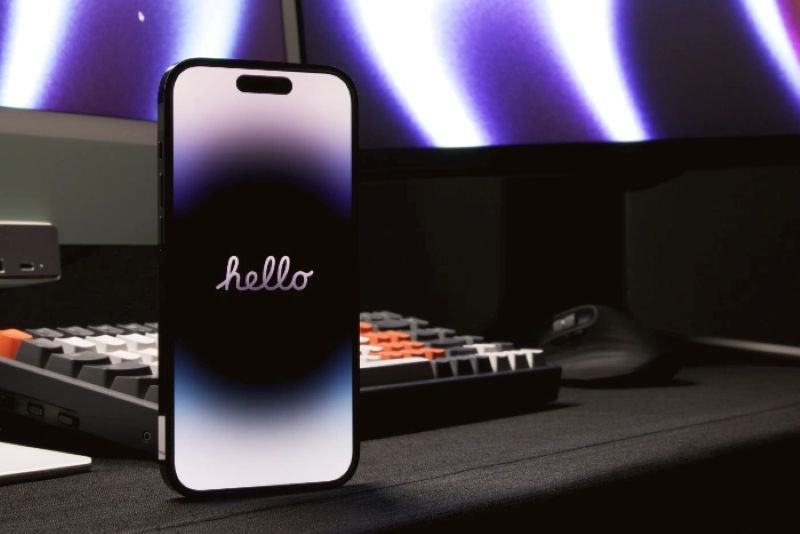

Is your iPhone feeling sluggish lately? Don't rush to upgrade just yet! There are several ways to boost your device's performance without breaking the bank. Let's explore this topic in more detail with Tiny Fishing below, where we'll dive into some clever tricks to speed up your iPhone and maximize its potential. From clearing out unnecessary data to optimizing settings, these tips will help breathe new life into your trusty companion. Whether you're a tech enthusiast or a casual user, these strategies will ensure your iPhone runs smoothly and efficiently for years to come.
One of the most effective ways to speed up your iPhone is by decluttering its storage. Over time, our devices accumulate a vast amount of unnecessary data, apps, and files that can significantly slow down performance. Start by reviewing your installed apps and removing those you no longer use or need. Many of us download apps on a whim and forget about them, but they continue to take up valuable space and resources.
Next, tackle your photo and video library. These media files often consume a large portion of your iPhone's storage. Consider using cloud storage services like iCloud or Google Photos to back up your memories and free up space on your device. Once you've safely stored your photos and videos in the cloud, you can delete them from your iPhone with peace of mind.
Don't forget to clear out your browser cache and history regularly. Safari and other web browsers store temporary files to speed up browsing, but over time, these can accumulate and slow down your device. Go to Settings > Safari > Clear History and Website Data to give your browser a fresh start.
Lastly, take a look at your Messages app. If you're an avid texter, you might be surprised by how much space old conversations and attachments can occupy. Go through your messages and delete old threads, especially those with large attachments or media files. You can also adjust your message history settings to automatically delete older messages after a certain period.
Read more: How to Extend iPhone Battery Life: 15 Proven Tips
Your iPhone comes with a plethora of settings that can be fine-tuned to enhance its performance. One of the most impactful changes you can make is to disable unnecessary visual effects. While these animations look sleek, they can slow down your device, especially on older models. Go to Settings > Accessibility > Motion and turn on Reduce Motion to minimize these effects.
Background App Refresh is another feature that can drain your iPhone's resources. This function allows apps to update their content in the background, even when you're not using them. While it's convenient, it can significantly impact your device's speed and battery life. Navigate to Settings > General > Background App Refresh and turn it off completely or selectively for apps that don't need constant updating.
Location Services is another potential culprit for sluggish performance. While useful for many apps, having it constantly running can slow down your iPhone and drain its battery. Go to Settings > Privacy > Location Services and review which apps have access to your location. Disable it for apps that don't need this information or set it to "While Using the App" instead of "Always."
Siri, Apple's virtual assistant, can be a helpful tool, but its features can also consume system resources. If you don't frequently use Siri, consider disabling some of its features. Go to Settings > Siri & Search and turn off options like "Listen for 'Hey Siri'" and "Suggestions in Search" to free up some processing power.
Notifications can be both a blessing and a curse. While they keep us informed, an excess of notifications can overwhelm your iPhone's system and lead to slower performance. Take some time to review your notification settings and customize them for each app. Go to Settings > Notifications and adjust the settings for apps that don't need to send you constant alerts.
Consider grouping notifications by app to reduce clutter on your lock screen and notification center. This not only makes it easier to manage your alerts but also helps your iPhone process them more efficiently. You can also use the "Deliver Quietly" option for less important apps, which will send their notifications directly to the Notification Center without lighting up your screen or playing a sound.
Keeping your iPhone's software up to date is crucial for maintaining its speed and security. Apple regularly releases iOS updates that include performance improvements, bug fixes, and new features. To check for updates, go to Settings > General > Software Update. If an update is available, make sure to back up your device before installing it.
While updating your iOS is important, it's equally crucial to keep your apps updated. Developers frequently release updates to improve app performance and compatibility with the latest iOS version. Enable automatic updates for your apps by going to Settings > App Store > App Updates and turning on "Automatic Downloads."
Occasionally, your iPhone may benefit from a fresh start. Restarting your device can clear out temporary files and refresh system processes, potentially resolving minor performance issues. Make it a habit to restart your iPhone once a week or whenever you notice it running slower than usual.
Read more: iPhone Overheating? Here’s What to Do
If you've tried all the above tips and your iPhone is still sluggish, it might be time to consider more drastic measures. A reset to factory settings can often resolve persistent performance issues. Before taking this step, ensure you have a recent backup of your data, either through iCloud or iTunes.
To reset your iPhone, go to Settings > General > Reset > Erase All Content and Settings. This will wipe your device clean and restore it to its original state. After the reset, you can set up your iPhone as new or restore it from your backup. Keep in mind that setting it up as new might yield better performance results, as you won't be carrying over any potential software issues from your backup.
Battery life and performance go hand in hand on the iPhone. When your battery is low or degraded, your device may slow down to conserve power. To check your battery's health, go to Settings > Battery > Battery Health. If your battery's maximum capacity is below 80%, consider getting it replaced at an Apple Store or authorized service provider.
Enabling Low Power Mode can significantly extend your battery life and, in turn, maintain consistent performance throughout the day. This mode reduces or disables certain features like background app refresh, automatic downloads, and some visual effects. You can turn on Low Power Mode in Settings > Battery or add it to your Control Center for quick access.
Adjusting your screen brightness can also have a significant impact on both battery life and performance. Auto-Brightness automatically adjusts your screen's brightness based on ambient light conditions. Ensure this feature is enabled by going to Settings > Accessibility > Display & Text Size > Auto-Brightness.
Lastly, be mindful of your charging habits. Avoid letting your iPhone's battery drain completely or leaving it plugged in at 100% for extended periods. Instead, try to keep your battery level between 20% and 80% for optimal longevity and performance.
Airplane Mode isn't just for air travel. This feature can be a powerful tool for boosting your iPhone's performance in certain situations. When enabled, Airplane Mode turns off all wireless communications, including cellular data, Wi-Fi, and Bluetooth. This can significantly reduce battery drain and free up system resources.
Consider using Airplane Mode when you're in areas with poor cellular reception. Your iPhone expends a lot of energy searching for a signal in these situations, which can lead to faster battery drain and slower overall performance. Airplane Mode can also be useful when you need to focus on a task without interruptions or when you want to charge your device more quickly.
In conclusion, speeding up your iPhone without upgrading is entirely possible with the right approach. By decluttering your device, optimizing settings, maintaining software, and managing your battery life effectively, you can breathe new life into your trusty iPhone. Remember, small changes can make a big difference in your device's performance. Implement these tips gradually and observe how your iPhone responds. With a little patience and care, you can enjoy a smoother, faster iPhone experience without the need for a costly upgrade. Keep exploring and experimenting with these strategies to find the perfect balance of performance and functionality for your unique needs.